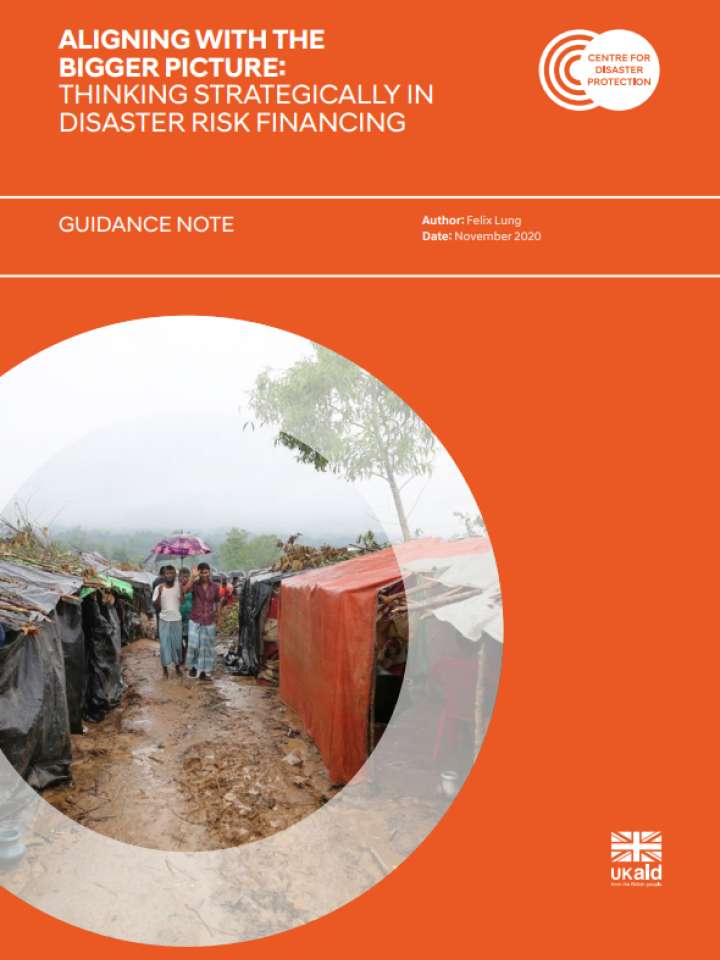Aligning with the bigger picture: Thinking strategically in disaster risk financing
This guidance note offers some guidance for practitioners on each of the four strategic principles to build an effective disaster risk financing (DRF) programme.
- Prioritising risks. DRF initiatives should tackle priority risks—that is, risks that policy-makers have identified as particularly important for a given context. While the prioritisation process will look different in every country, typical factors that are considered include, for example, the associated financial loss and suffering of different risks. To start the prioritisation process, a disaster risk assessment is typically a suitable first step
- Ensuring alignment. Well-aligned DRF initiatives are designed so that they do not duplicate impact unintentionally. For example, the targeting of two initiatives may not be well aligned so that they end up duplicating funding to some people, whilst missing out others entirely. This can be caused by a lack of planning leading to inefficiencies.
- Ensuring complementarity. DRF instruments should also be designed to support each other. For example, response financing instruments should not discourage investments in risk reduction—they should incentivise them. Likewise, public investments in risk reduction should not provide a false sense of security—they should incentivise people, firms, and communities to properly prepare themselves too. And given that many initiatives will use similar systems—for targeting or delivery for example—they should explore pooling resources to exploit economies of scale.
- Ensuring integration with long-term planning and policies. It typically takes a long time for DRF initiatives to develop their full potential. Including them in long-term planning and policies can support their durability and enable them to mature to a point where they are fully effective. Besides, DRF can touch on many policy areas beyond disaster risk management, such as climate change, agricultural development, economic development, and poverty alleviation. Policy plans for these areas should explicitly consider DRF instruments where they are relevant, to ensure full utilisation of their benefits.
For more details on the practical guidance, please refer to the pages 7 to 12 of this note.
Explore further

